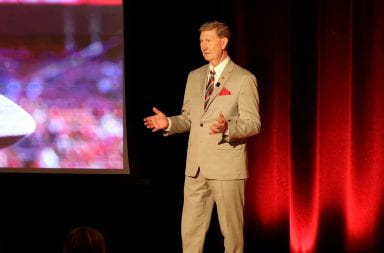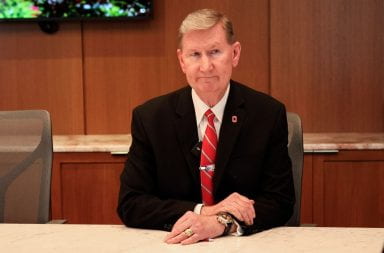
Heart rate variability (HRV) offers insights into recovery from illness, injury or exercise, can track levels of physical and emotional stress, and even act as a predictor of cardiac failure. Advances in technology, including image sensors, now make HRV measurement accessible to anyone with a chest strap or smartphone. Credit: Dreamstime via TNS
Heart failure impacts around 6 million Americans every day, and Ohio State researchers are testing how speech can help catch signs before it’s too late.
A new trial will be taking place over the next two years in which 500 patients with chronic heart failure will use an app called HearO to track potential heart failure through changes in speech. HearO is currently in the trial stages and working on developing feedback from the patients, Dr. Rami Kahwash said.
Kahwash, director of Ohio State Heart and Vascular Research Organization at the Wexner Medical Center of Ohio State, said HearO analyzes 365,000 data points using an artificial intelligence program, which then analyzes the voice to establish a pattern. According to HearO’s website, the app tracks fluid accumulation related to CHF and alerts the patient, according to its website.
“[HearO will] reflect speech, fluency and the quality of the voice,” Kahwash said. “If a patient is compensated — meaning they don’t have any fluid overload — we have them initially record their speech during the time they are asymptomatic.”
The app tracks words and speech patterns, and Kahwash said this method is a unique way to detect signs of heart failure. Kahwash said the voice change in the setting of heart failure is due to fluid in the lungs, which causes the patient to generate less air, as his or her upper airways become congested, leaving the voice muffled.
“The idea of this trial is testing something that’s rather unique. When we talk, our voice is generated by air that we blow from the lung that goes through our vocal cords, then you hear it,” Kahwash said. “The speed of my voice right now, the frequency of my words and the pattern of my speech sometimes change in the setting of heart failure.”
The trial will try to link changes in voice pattern with observed patient health, Kahwash said.
“We are trying to make sense out of those changes in the way that we could protect the patient from early accumulation of fluid in the lung, even before the patient knows that they are having this,” Kahwash said.
According to the Heart Failure Society of America, every 10 percent improvement in the use of recommended treatments — including medications — has been associated with a 13 percent lower risk of death among heart failure patients
Kahwash said much of a cardiologist’s job is performing surgeries and implants, but HearO is a noninvasive method — there are no procedures involved.
“If I tell my patients that I am going to install an app in the clinic on their iPhone verses I’m going to bring you to the cath[eterization] lab for a procedure, of course they are going to prefer the first one,” Kahwash said.
Implanting a sensor into the lung to detect pressure change is another method, although it is invasive, Kahwash said.
Kahwash said the future of this app will include alerting the provider the app sees abnormal activity. This allows the provider to take action early before it could be too late.
Dr. Jim Liu, a cardiologist at Ohio State, said heart failure occurs when the heart is pumping ineffectively. A human’s normal ejection fraction — the percentage of blood leaving the heart each time it squeezes — is roughly 55 percent, Liu said.
“If it’s lower than that, you can have symptoms of heart failure,” Liu said. “You can also have symptoms of heart failure with a normal ejection fraction, sometimes that’s due to when the heart is more stiff and doesn’t relax.”
Certain types of heart failure happen due to specific causes, Liu said. He said arrhythmias — irregular heartbeats — can lead to heart failure.
There are several ways to help limit heart failure and even reverse it in some cases, Liu said. Medications can sometimes be helpful to people who are at risk.
“Uncontrolled high blood pressure, underlying coronary disease, previous heart attacks and heart valve problems can lead to heart failure,” Liu said.


